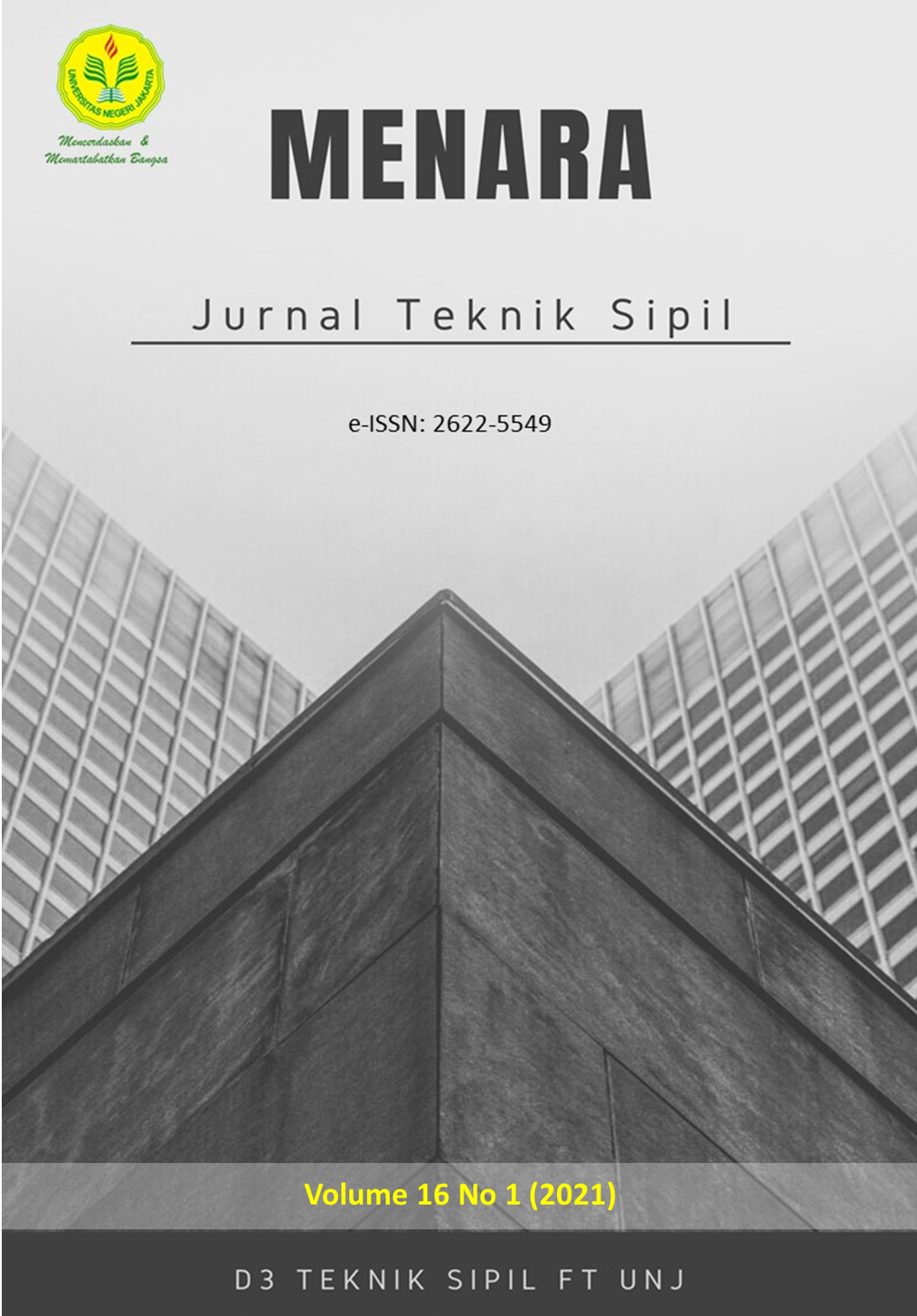PENGARUH MINUMAN SODA TERHADAP BSETTING TIME DAN KUAT TEKAN BETON
DOI:
https://doi.org/10.21009/jmenara.v16i1.16653Keywords:
compressive strength, concrete, retarder, setting time, sodaAbstract
This study aims to examine the change in concrete behavior in regards to adding soda drinks as retarder and to compare the properties of cocrete using soda drinks and concrete without using soda. In this study, the writer uses soda drink content in 3%, 6%, 9%, and 12% variatons based on cement weight. Each variations uses 1 specimen for vicat tests and 2 specimens is used for compressive strength test. In testing using the vicat tool it measures the delay that occurs in content levels of 3%, 6%, 9%, and 12% could be considered retarders, where as compressive testing examines the maximum strength acquired from adding soda to the concrete is increased by 1.64% with a variation of 3% from normal concrete and decreased gradually by 1,9% 3,9%, and 4,11% with variations of 6%, 9%, and 12% respectively
References
Mulyono, T. (2004). Teknologi Beton (edisi kedua). Penerbit Andi Offset, Yogyakarta.
Mulyono, T. (2004). Teknologi beton. Andi, Yogyakarta.
Nasional, B. S. (1990). SNI 03-1971-1990, Metode Pengujian Kadar Air Agregat. Jakarta (ID): BSN.
Nasional, B. S. (2000). Tentang Tata Cara Pembuatan Rencana Campuran Beton Normal. SNI, 3, 2834.
Nasional, B. S. (2002). SNI 03-6827-2002 Metode Pengujian Waktu Ikat Awal Semen Porland dengan Menggunakan Alat Vicat untuk Pekerjaan Sipil.
Nasional, B. S. (2004). SNI 15-2049-2004 Semen Portland. BSN, Jakarta.
Nasional, B. S. (2011). SNI 2493: 2011. Tata Cara Pembuatan dan Perawatan Benda Uji Beton di Laboratorium.
Revisdah, R., & Setiawati, M. (2015). Pengaruh Air Soda Terhadap Kuat Tekan Beton. Prosiding Semnastek.
Satyarno, I. (2004). Penggunaan Semen Putih untuk Beton Styrofoam Ringan (BATAFOAM). Program Swadaya (Ekstensi) Teknik Sipil, FT UGM. Yogyakarta.
Susilorini, R., & Rr, M. I. (2009). Kinerja Kuat Tekan Mortar dengan Bahan Tambah Berbasis Gula Alami.
Tjokrodimulyo, K. (1992). TEKNOLOG1 BETON.
Downloads
Published
Issue
Section
License
Authors who publish with this Journal agree to the following terms:
- Author retain copyright and grant the journal right of first publication with the work simultaneously licensed under a creative commons attribution licensethat allow others to share the work within an acknowledgement of the work’s authorship and initial publication of this journal.
- Authors are able to enter into separate, additional contractual arrangementfor the non-exclusive distribution of the journal’s published version of the work (e.g. acknowledgement of its initial publication in this journal).
- Authors are permitted and encouraged to post their work online(e.g. in institutional repositories or on their websites) prior to and during the submission process, as it can lead to productive exchanges, as well as earlier and greater citation of published works.











